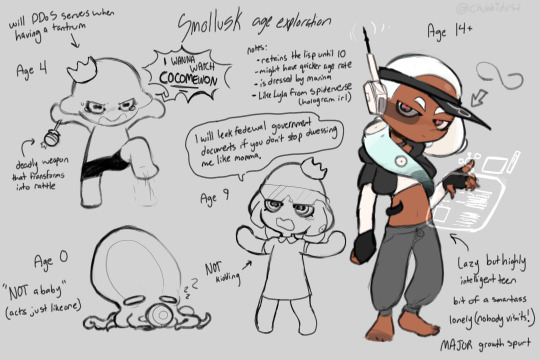#ai power
Explore tagged Tumblr posts
Text
The AI Power Conundrum: Will Renewables Save the Day?
The rapid advancement of artificial intelligence (AI) technologies is transforming industries and driving unprecedented innovation. However, the surge in AI applications comes with a significant challenge: the growing power demands required to sustain these systems. As we embrace the era of AI power, the question arises: can renewable energy rise to meet these increasing energy needs?
Understanding the AI Power Demand
AI systems, particularly those involving deep learning and large-scale data processing, consume vast amounts of electricity. Data centers housing AI servers are notorious for their high energy requirements, often leading to increased carbon emissions. As AI continues to evolve, the demand for energy is expected to skyrocket, posing a substantial challenge for sustainability.
The Role of Renewable Energy
Renewable energy sources, such as solar, wind, and hydroelectric power, present a viable solution to the AI power conundrum. These sources produce clean, sustainable energy that can help offset the environmental impact of AI technologies. By harnessing renewable energy, tech companies can significantly reduce their carbon footprint while meeting their power needs.
Tech Giants Leading the Way
Several tech giants are already paving the way by integrating renewable energy into their operations. Companies like Google, Amazon, and Microsoft are investing heavily in renewable energy projects to power their data centers. For instance, Google has committed to operating on 24/7 carbon-free energy by 2030. These initiatives demonstrate the potential for renewable energy to support the massive energy demands of AI power.
Challenges and Opportunities
While the integration of renewable energy is promising, it comes with its own set of challenges. Renewable energy sources can be intermittent, depending on weather conditions, which can affect their reliability. However, advancements in energy storage solutions and smart grid technologies are addressing these issues, ensuring a more stable and dependable supply of renewable energy.
The synergy between AI and renewable energy also presents unique opportunities. AI can optimize the performance of renewable energy systems, predict energy demand, and enhance energy efficiency. This symbiotic relationship has the potential to accelerate the adoption of renewable energy and create a more sustainable future.
Conclusion
The AI power conundrum is a pressing issue that demands innovative solutions. Renewable energy emerges as a crucial player in addressing this challenge, offering a sustainable path forward. As tech companies continue to embrace renewable energy, the future of AI power looks promising, with the potential to achieve both technological advancement and environmental sustainability.
By integrating renewable energy into the AI ecosystem, we can ensure that the growth of AI technologies does not come at the expense of our planet. The collaboration between AI and renewable energy is not just a possibility; it is a necessity for a sustainable future.
2 notes
·
View notes
Text
Future of AI: Predictions and Trends in Artificial Intelligence
Introduction: Exploring the Exciting Future of AI
Artificial Intelligence (AI) has become an integral part of our lives, revolutionizing the way we work, communicate, and interact with technology. As we delve into the future of AI, it is essential to understand the predictions and trends that will shape this rapidly evolving field. From machine learning to predictive analytics, natural language processing to robotics, and deep learning to ethical considerations, the possibilities seem limitless. In this article, we will explore the exciting future of AI and its potential impact on various industries and aspects of our lives.
The Rise of Machine Learning: How AI is Evolving
Machine learning, a subset of AI, has been a driving force behind the advancements we have witnessed in recent years. It involves training algorithms to learn from data and make predictions or decisions without explicit programming. As we move forward, machine learning is expected to become even more sophisticated, enabling AI systems to adapt and improve their performance over time.
One of the key trends in machine learning is the rise of deep learning, a technique inspired by the structure and function of the human brain. Deep learning algorithms, known as neural networks, are capable of processing vast amounts of data and extracting meaningful patterns. This has led to significant breakthroughs in areas such as image recognition, natural language processing, and autonomous vehicles.
Predictive Analytics: Unleashing the Power of AI in Decision-Making
Predictive analytics, powered by AI, is transforming the way organizations make decisions. By analyzing historical data and identifying patterns, AI systems can predict future outcomes and provide valuable insights. This enables businesses to optimize their operations, improve customer experiences, and make data-driven decisions.
In the future, predictive analytics is expected to become even more accurate and efficient, thanks to advancements in machine learning algorithms and the availability of vast amounts of data. For example, AI-powered predictive analytics can help healthcare providers identify patients at risk of developing certain diseases, allowing for early intervention and personalized treatment plans.
Natural Language Processing: Revolutionizing Human-Computer Interaction
Natural Language Processing (NLP) is a branch of AI that focuses on enabling computers to understand and interact with human language. From voice assistants like Siri and Alexa to chatbots and language translation tools, NLP has already made significant strides in improving human-computer interaction.
In the future, NLP is expected to become even more advanced, enabling computers to understand context, emotions, and nuances in human language. This will open up new possibilities for virtual assistants, customer service bots, and language translation tools, making communication with technology more seamless and natural.
Robotics and Automation: AI's Impact on Industries and Jobs
AI-powered robotics and automation have the potential to revolutionize industries and reshape the job market. From manufacturing and logistics to healthcare and agriculture, robots and automated systems are already making significant contributions.
In the future, we can expect to see more advanced robots capable of performing complex tasks with precision and efficiency. This will lead to increased productivity, cost savings, and improved safety in various industries. However, it also raises concerns about job displacement and the need for reskilling and upskilling the workforce to adapt to the changing job landscape.
Deep Learning: Unlocking the Potential of Neural Networks
Deep learning, a subset of machine learning, has gained immense popularity in recent years due to its ability to process and analyze complex data. Neural networks, the foundation of deep learning, are composed of interconnected layers of artificial neurons that mimic the structure of the human brain.
The future of deep learning holds great promise, with potential applications in fields such as healthcare, finance, and cybersecurity. For example, deep learning algorithms can analyze medical images to detect diseases at an early stage, predict stock market trends, and identify anomalies in network traffic to prevent cyberattacks.
Ethical Considerations: Addressing the Challenges of AI Development
As AI continues to advance, it is crucial to address the ethical considerations associated with its development and deployment. Issues such as bias in algorithms, privacy concerns, and the impact on jobs and society need to be carefully considered.
To ensure the responsible development and use of AI, organizations and policymakers must establish ethical guidelines and regulations. Transparency, accountability, and inclusivity should be at the forefront of AI development, ensuring that the benefits of AI are accessible to all while minimizing potential risks.
AI in Healthcare: Transforming the Medical Landscape
AI has the potential to revolutionize healthcare by improving diagnosis, treatment, and patient care. From analyzing medical images to predicting disease outcomes, AI-powered systems can assist healthcare professionals in making more accurate and timely decisions.
In the future, AI is expected to play an even more significant role in healthcare. For example, AI algorithms can analyze genomic data to personalize treatment plans, predict disease outbreaks, and assist in drug discovery. This will lead to improved patient outcomes, reduced healthcare costs, and enhanced overall healthcare delivery.
Smart Cities: How AI is Shaping Urban Living
AI is transforming cities into smart, connected ecosystems, enhancing efficiency, sustainability, and quality of life. From traffic management and energy optimization to waste management and public safety, AI-powered systems can analyze vast amounts of data and make real-time decisions to improve urban living.
In the future, smart cities will become even more intelligent, leveraging AI to optimize resource allocation, reduce congestion, and enhance citizen services. For example, AI-powered sensors can monitor air quality and automatically adjust traffic flow to reduce pollution levels. This will lead to more sustainable and livable cities for future generations.
AI in Education: Enhancing Learning and Personalization
AI has the potential to revolutionize education by personalizing learning experiences, improving student outcomes, and enabling lifelong learning. Adaptive learning platforms powered by AI can analyze student data and provide personalized recommendations and feedback.
In the future, AI will play a more significant role in education, enabling personalized learning paths, intelligent tutoring systems, and automated grading. This will empower students to learn at their own pace, bridge learning gaps, and acquire the skills needed for the future job market.
Cybersecurity: Battling the Dark Side of AI
While AI offers numerous benefits, it also poses significant challenges in the realm of cybersecurity. As AI becomes more sophisticated, cybercriminals can exploit its capabilities to launch more advanced and targeted attacks.
To combat the dark side of AI, cybersecurity professionals must leverage AI-powered tools and techniques to detect and prevent cyber threats. AI algorithms can analyze network traffic, identify patterns of malicious behavior, and respond in real-time to mitigate risks. Additionally, organizations must invest in cybersecurity training and education to stay ahead of evolving threats.
Conclusion: Embracing the Future of AI and Its Limitless Possibilities
The future of AI is filled with exciting possibilities that have the potential to transform industries, enhance our daily lives, and address some of the world's most pressing challenges. From machine learning and predictive analytics to natural language processing and robotics, AI is evolving at a rapid pace.
However, as we embrace the future of AI, it is crucial to address ethical considerations, ensure transparency and accountability, and prioritize inclusivity. By doing so, we can harness the power of AI to create a better future for all.
As AI continues to advance, it is essential for individuals, organizations, and policymakers to stay informed about the latest trends and developments. By understanding the potential of AI and its impact on various sectors, we can make informed decisions and leverage its capabilities to drive innovation and positive change.
The future of AI is bright, and by embracing it with an open mind and a focus on responsible development, we can unlock its limitless possibilities and shape a better future for generations to come.
#ai#artificial intelligence#ai power#future of ai#ai cybersecurity#ai in education#future of artificial intelligence#dark side of ai#ai predictions#machine learning#ai education#ai medicine
3 notes
·
View notes
Text
Microsoft wants Three Mile Island to fuel its AI power needs

🔺 Microsoft just signed a deal to revive the shuttered Three Mile Island nuclear power plant. If approved by regulators, the software maker would have exclusive rights to 100 percent of the output for its Al data center needs. Constellation, the owner of the Three Mile Island plant, announced a power purchase agreement with Microsoft earlier today, which should see the site coming back online in 2028, assuming regulators approve it.
🔺 The reactor that Microsoft plans to source its energy from was retired in 2019 for economic reasons and is located next to a unit that was shut down in 1979 after the worst US nuclear accident in history. The plant that Constellation plans to reopen can generate 837 megawatts of energy, enough to power more than 800,000 homes - demonstrating the huge amount of power needed for data centers and Microsoft's Al ambitions.
🔺 Microsoft has agreed to purchase power from the plant - which will be renamed to the Crane Clean Energy Center to honor the late Chris Crane, former CEO of Exelon - for 20 years in a first-of-its-kind deal for the software giant. Microsoft's own greenhouse gas emissions are growing with its focus on Al, putting its ambitious climate goals at risk.
🔺 Bloomberg reports that this nuclear plant would help Microsoft's plans to run its data centers on clean energy by 2025 and power data center expansions in Chicago, Virginia, Pennsylvania, and Ohio. "This agreement is a major milestone in Microsoft's efforts to help decarbonize the grid in support of our commitment to become carbon negative," says Bobby Hollis, vice president of energy at Microsoft. "Microsoft continues to collaborate with energy providers to develop carbon-free energy sources to help meet the grids' capacity and reliability needs."
🔺 Microsoft has been betting on next-generation nuclear reactors to power its data center and Al plans recently, looking for someone who could roll out a plan for small modular reactors (SMR) last year. Microsoft cofounder Bill Gates is also a "big believer that nuclear energy can help us solve the climate problem." Constellation will invest $1.6 billion to revive the plant, and the company will need approval from the Nuclear Regulatory Commission to bring the site back online, alongside permits from state and local agencies. Constellation is also pursuing a license renewal to extend plant operations until at least 2054.
#artificial intelligence#ai#bill gates#microsoft#chris crane#us#clean energy#nuclear energy#ai power
1 note
·
View note
Text











Surely this will have no negative consequences whatsoever!
#dbhc#dbhc art#dbhc grian#dbhc mumbo#dbhc s8#art escapades#grian#Mumbo#mumbojumbo#mumbo jumbo#hermitcraft#hermitcraft au#grumbo#hermitcraft s8#hc watchers#watchers#watcher grian#watcher mumbo#tw eyestrain#tw eye contact#tw eye imagery#tw eldritch#tw glitch#tw horror#not sure what all to tag here so pls lemme know if I should add anything#yeah I took the soul sharing thing in a very ‘’undertale’’ light#those aus where Asriel and frisk share a soul so asriel can maintain his form really changed me /silly#also this was a great idea grian. yeah. yeah okay. give the 6 month old robot with an ai soul the eldritch all seeing powers of a watcher#good idea#love the ‘woah’ page… something about grian being able to see entities at their ‘core’…. the androids being code-contained vessels…
10K notes
·
View notes
Note
one 100 word email written with ai costs roughly one bottle of water to produce. the discussion of whether or not using ai for work is lazy becomes a non issue when you understand there is no ethical way to use it regardless of your intentions or your personal capabilities for the task at hand
with all due respect, this isnt true. *training* generative ai takes a ton of power, but actually using it takes about as much energy as a google search (with image generation being slightly more expensive). we can talk about resource costs when averaged over the amount of work that any model does, but its unhelpful to put a smokescreen over that fact. when you approach it like an issue of scale (i.e. "training ai is bad for the environment, we should think better about where we deploy it/boycott it/otherwise organize abt this) it has power as a movement. but otherwise it becomes a personal choice, moralizing "you personally are harming the environment by using chatgpt" which is not really effective messaging. and that in turn drives the sort of "you are stupid/evil for using ai" rhetoric that i hate. my point is not whether or not using ai is immoral (i mean, i dont think it is, but beyond that). its that the most common arguments against it from ostensible progressives end up just being reactionary

i like this quote a little more- its perfectly fine to have reservations about the current state of gen ai, but its not just going to go away.
#i also generally agree with the genie in the bottle metaphor. like ai is here#ai HAS been here but now it is a llm gen ai and more accessible to the average user#we should respond to that rather than trying to. what. stop development of generative ai? forever?#im also not sure that the ai industry is particularly worse for the environment than other resource intense industries#like the paper industry makes up about 2% of the industrial sectors power consumption#which is about 40% of global totals (making it about 1% of world total energy consumption)#current ai energy consumption estimates itll be at .5% of total energy consumption by 2027#every data center in the world meaning also everything that the internet runs on accounts for about 2% of total energy consumption#again you can say ai is a unnecessary use of resources but you cannot say it is uniquely more destructive
1K notes
·
View notes
Text

smollusk grows up
#splatoon#my art#smollusk#order#side order#doodles#i think smollusk goes by it/its?#so i kept its gender presentation neutral when its older#however i think marina would dress it femininely as a child#until it matures enough to decide its own clothing#its still a very powerful and intelligent AI#but i think it also has the maturity of a toddler#as in Will Doxx Anyone That Makes It Mad and broadcast it on television#until marina revokes its access to the internet (grounded)
3K notes
·
View notes
Text
Unleashing the Potential of Artificial Intelligence in Sustainable Technology: Driving Efficiency and Conservation
Introduction:
Artificial Intelligence (AI) is ushering in a new era of sustainable technology, transforming industries and driving positive change. With its remarkable capabilities to process data, learn patterns, and make intelligent decisions, AI is revolutionizing sustainability efforts worldwide. In this blog, we will explore how Artificial Intelligence is revolutionizing sustainable technology, creating a more efficient and conservation-focused future.

Enhancing Efficiency through AI:
AI is unlocking unprecedented efficiency gains across various sectors. By analyzing large datasets and identifying patterns, AI algorithms can optimize processes, reduce waste, and streamline operations. In manufacturing, AI-powered systems can predict maintenance needs, enabling proactive repairs and minimizing downtime. This not only improves efficiency but also reduces resource consumption and lowers environmental impact.
AI-Driven Resource Management:
Efficient resource management is critical for sustainable development. AI plays a vital role in optimizing resource utilization. For instance, in water management, AI algorithms analyze data from sensors and weather forecasts to optimize irrigation, reducing water wastage in agriculture. Similarly, AI-powered systems in buildings can optimize energy consumption by adjusting lighting, temperature, and ventilation based on occupancy patterns, leading to substantial energy savings.
Sustainable Transportation Revolution:
Transportation is a significant contributor to greenhouse gas emissions. AI is transforming this sector by promoting sustainable practices. Intelligent transportation systems powered by AI can optimize traffic flow, reduce congestion, and minimize fuel consumption. Additionally, AI supports the development of electric and autonomous vehicles, further reducing emissions and enhancing energy efficiency in transportation.
Environmental Monitoring and Conservation:
AI has the potential to revolutionize environmental monitoring and conservation efforts. Through advanced data analysis and machine learning, AI systems can process vast amounts of environmental data, detect anomalies, and identify potential risks. For example, AI-powered drones can monitor wildlife habitats, track deforestation, and detect illegal activities, enabling timely intervention and conservation measures.
AI for Waste Management:
Efficient waste management is essential for sustainability. AI technologies contribute to waste management optimization, such as smart waste sorting systems that use computer vision to identify and sort recyclable materials from waste streams accurately. AI algorithms can also optimize waste collection routes, reducing fuel consumption and emissions associated with waste management processes.
Conclusion:
Artificial Intelligence is revolutionizing sustainable technology, driving efficiency gains and promoting conservation efforts across industries. Through AI-driven solutions, we can optimize resource management, enhance energy efficiency, and develop sustainable transportation systems. Moreover, AI empowers us to monitor and protect the environment, enabling timely intervention and conservation measures. As AI continues to advance, it is crucial to ensure responsible and ethical use to maximize its positive impact on sustainable technology. By harnessing the power of Artificial Intelligence, we can pave the way towards a more sustainable future, where efficiency and conservation thrive hand in hand.
0 notes
Text
Just ask AI 🤔
#pay attention#educate yourselves#educate yourself#knowledge is power#reeducate yourselves#reeducate yourself#think about it#think for yourselves#think for yourself#do your homework#do your research#do some research#do your own research#ask yourself questions#question everything#ai#artificial intelligence#escape the matrix#truth be told#news#you decide
794 notes
·
View notes
Text

stupidest people on gods green earth
#i mean take away all the buzzwords here and what are you left with. 'public rollout of ai' what does that even fucking mean#'ai' vague. what do you mean by that kier. i don't think you know either do you#excellent idea boys. lets invest the nation's economy into a volatile hyped up tech bubble and wait till it collapses. couldn't go wrong#even more insane is they want to build 'mini nuclear reactors' to power this. not to like.....shift us away from fossil fuels#but this government has already as much as stated they dgaf about the environment. so.#ukpol#uk politics
499 notes
·
View notes
Text
Folks, remember Daxiong’s DC variants he with with AI? DC quietly confirmed he did use AI, they cancelled the variants, and replaced them with cover art made by actual artists
I found a few small sources confirming this, along with the new covers created by actual artists
Wonder Woman #10: Daxiong —> Dan Panosian


Shazam #12: Daxiong —> Cully Hamner


Power Girl #10: Daxiong —> Dave Johnson


I’m glad DC cancelled the original covers. It’s not worth buying art of any kind if no one spent the time to actually make them. These new variants being made by actual artists are a million times better for that reason alone, that real human artists put their time into making them, and not AI stealing from what has already been created.
1K notes
·
View notes
Note
i request more kerfur and kel. it brings me nourishment.

same, have a comic
access denied/comforting presence
#votv#voices of the void#votv spoilers#this won't make a ton of sense unless you've seen the i don't feel well lore video but i think you get the jist#(the gist is kerfur cares him)#my art#kerfur#dr kel votv#to be clear: the yellow text here is a request from the yellow text person in the lore vid#but the thing about (fictional) learning ai is... they learn. they grow. sometimes they learn to say 'no'. and 'no' is powerful
440 notes
·
View notes
Text


Grump doodles for your viewing pleasure
#arin is so easy to chibi-fy#he's like a cartoon to me#dont know how i didn't realise until now that it was Jarvis he fought at creator clash#game grumps fanart#game grumps#arin hanson#dan avidan#10 minute power hour#his delicate wrists and constantly expanding hair have enamored me#i've been binging old 10mph episodes to destress#(it's helping)#if you didn't see my last grump post you should#I spent hours on that portrait and for what#I posted it on reddit and someone accused me of using ai and then some other person attempted to stick up for me#there was a Minor Confrontation#on one hand I don't want anyone to argue especially not in the comments of one of my posts#but on the other hand#if it gets really wild it could end up in a penguinz0 video#'The arin portrait reddit comment debate just got even goofier'#if i get shadowbanned again im gonna rage
242 notes
·
View notes
Text
My pookies Fyodor and Ivan

I made this without thinking at all my iq is in the negatives
#doodle#digital art#human artist#hetalia#ivan braginsky#hetalia fanart#hetalia fandom#russia hetalia#slavic#artwork#shitpost#meme#artists on tumblr#fanart#hws#aph Russia#fyodor dostoevsky#dostoevksy#crime and punishment#aph#hetalia memes#made this while listening to Myslovitz on loop help#fuck ai art#human art#Russia#bramińska#Ivan#axis powers hetalia#low effort
905 notes
·
View notes
Text

4 YEARS!! 🧪✨🫧☀️🌈🔥‼️
#ever since I saw this scene 4 whole years ago I’ve wanted 2 draw it…. I’m finally powerful enough ….#WOOOOOOOOO#ROAD TRIIIIIIIIIIAAAAAPPPPPPPPPPPP#I wuz talking about this earlier but this is. The first time ive ever drawn and coloured them all together#Despite hlvrai meanin so much to me and how big it was/is fer me I just. Wasn't. Involved? In any way?? Back in th day??#WHICH IS PROBABLY. FOR THE BEST TO BE HONEST !!!!!!!!#I've been enjoying it by myself for like 4 years. Lolz#Anyway happy four years i love youuuuuuyyyuu#hlvrai#hlvrai anniversary#half life but the ai is self aware#gordon feetman#tommy coolatta#benrey#dr coomer#dr bubby#harold p coomer#benry#benry hlvrai#gordon hlvrai#tommy hlvrai#half live vr but the ai is self aware#half live vr ai#Girl also I was up til like fucking midnight last night trying to cram this. Don't look at it too hard#I'll do an actual line up here in a bit#I WANTED TO HAVE DARNOLD & SUNKIST & FORZEN ALL HERE TOO BUT. AUAAGH#I couldn't figure out a good group pose/thing to do in a short time frame... sorry ........ sniffles and kicks a rock
1K notes
·
View notes
Text
Okay, use your working braincells and realize how much damage shitty AI art/writing does to the creative industries. There were STRIKES going on because of how out of control it was becoming and WILL become if this shit doesn't get called out immediately.
AI art doesn't just magically appear when you write your shitty chatgpt prompts, IT USES STOLEN ART FROM OTHER ARTISTS!!! The same goes for writing as well. IT SOURCES OTHER PEOPLE'S WORK!!
Actors are not puppets that you can just use to fulfill your horny on main urges. Actors are real human beings, they are workers and acting is their job. Acting is NOT A STABLE WORKING JOB! They don't have the usual 9/5 and clock out like most of us, they can sit for months not getting any calls or new projects. And I'm not talking about the AAAAA listers, I'm talking about the actors that have to do non-stop work, doing theatre, series and film, whatever role they can get, just for a paycheck. You have not worked a day in your life or have your ass still covered with money by someone to not get the point how scummy it is when you're using their likeness to make shitty AI art just because "BuT I WanTED theM to KISss nuuuu". FUCK OFF! I mean why have actors at all if that's the case? Fuck it!! AI ACTORS!! "I can make them kiss and do the things I've always wanted yaaaay!!" FUCK OFF!!
So, learn to draw, or make an AO3 account, practice some writing skills and in the same time venting your horny on main thoughts there like all the rest are doing.
Stop using AI art. Period.
#i haven't noticed that it was spreading even here so i better make some things clear right away#AI ART = BLOCK#shut it fuku#the rings of power#rings of power#trop#rop
382 notes
·
View notes